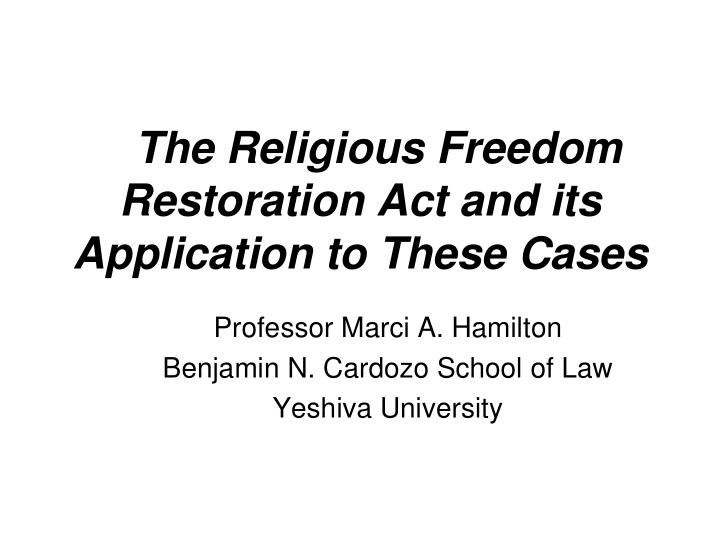



The Religious Freedom Restoration Act and its Application to These Cases Professor Marci A. Hamilton Benjamin N. Cardozo School of Law Yeshiva University
First Amendment: Hierarchy of Religious Rights “ The legitimate powers of government extend to such acts only as are injurious to others. But it does me no injury for my neighbor to say there are twenty gods, or no god." “the legitimate powers of government reach actions only, & not opinions” ---Thomas Jefferson • The Right to Believe = Absolute (harms no one) • The Right to Religious Speech = Highly Protected (harm unlikely) • The Right to Religious Conduct = The Law Governs Actions (harm more likely)
A Recent History of the Expansion of Religious Liberty Doctrine Ordered Liberty Under the Constitution, First Amendment, Free Exercise Clause (1878 – Present ) Employment Division v. Smith, 494 U.S. 872 (1990) and Church of Lukumi Babalu Aye v. City of Hialeah, 508 U.S. 520 (1993) a. Believer must prove law imposes a substantial burden b. A neutral, generally applicable law is constitutional unless irrational c. If law is not neutral or not generally applicable, ordinary strict scrutiny applies: the government must prove a compelling interest and that the law is narrowly tailored d. The right is only good against the government (state action) Singular Departure from Ordered Liberty Cases (1972) Wisconsin v. Yoder, 406 U.S. 205 (1972) a. Believer must prove a substantial burden b. Only Supreme Court case where a neutral, generally applicable law is subjected to strict scrutiny c. Government must prove a compelling interest and that the law is narrowly tailored Religious Freedom Restoration Act of 1993 a. Believer must prove a substantial burden b. Government must prove a neutral, generally applicable law serves a compelling interest Narrow tailoring is replaced by the more extreme “least restrictive means” c. Relief permitted only “against a government” d. Amendments to the Religious Freedom Restoration Act (2000) Expands definition of “religious exercise” to: “any exercise of religion, whether or not compelled by, or central to, a system of religious belief” SOURCE: Marci Hamilton, 2014 justia.com
Recommend
More recommend